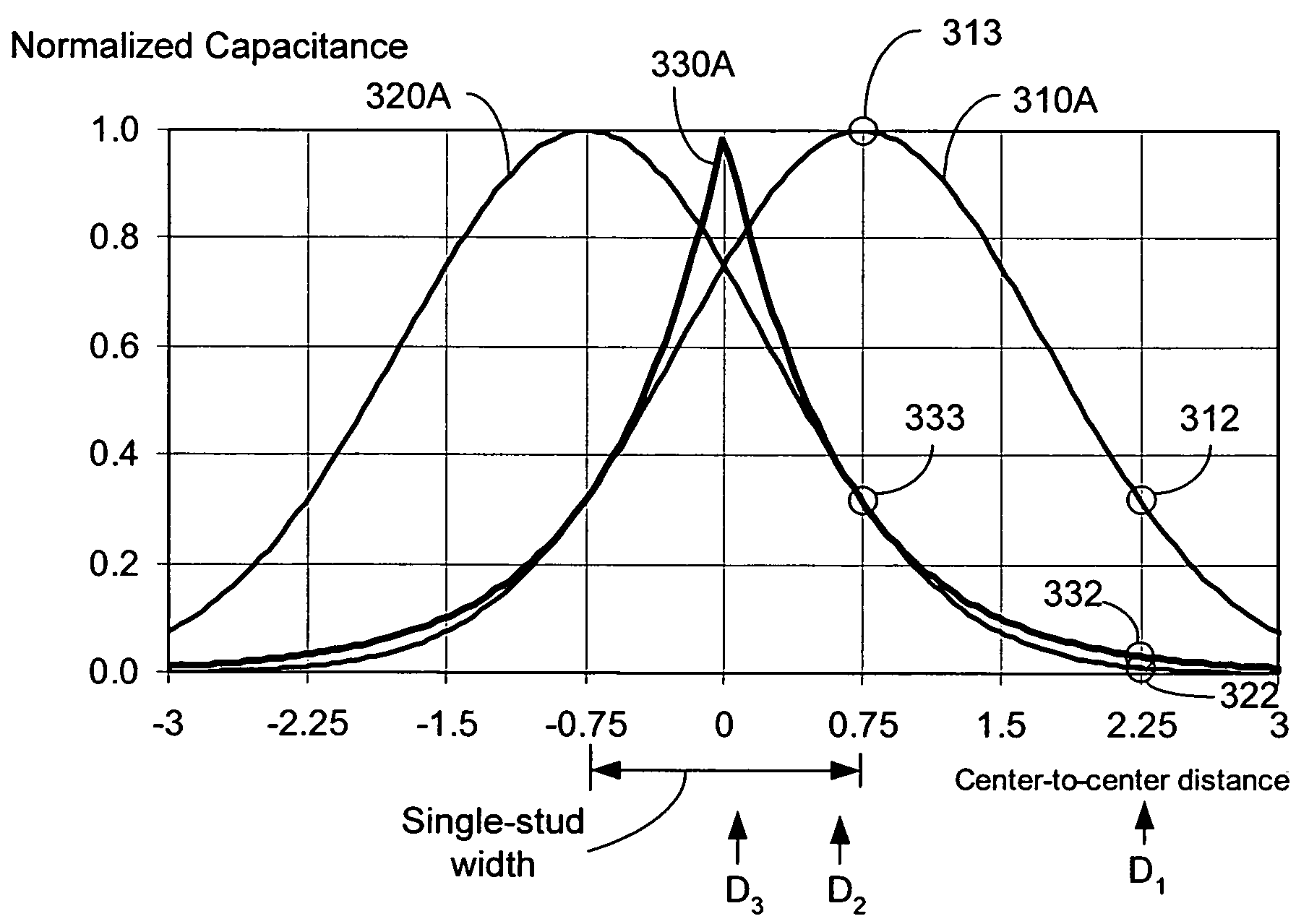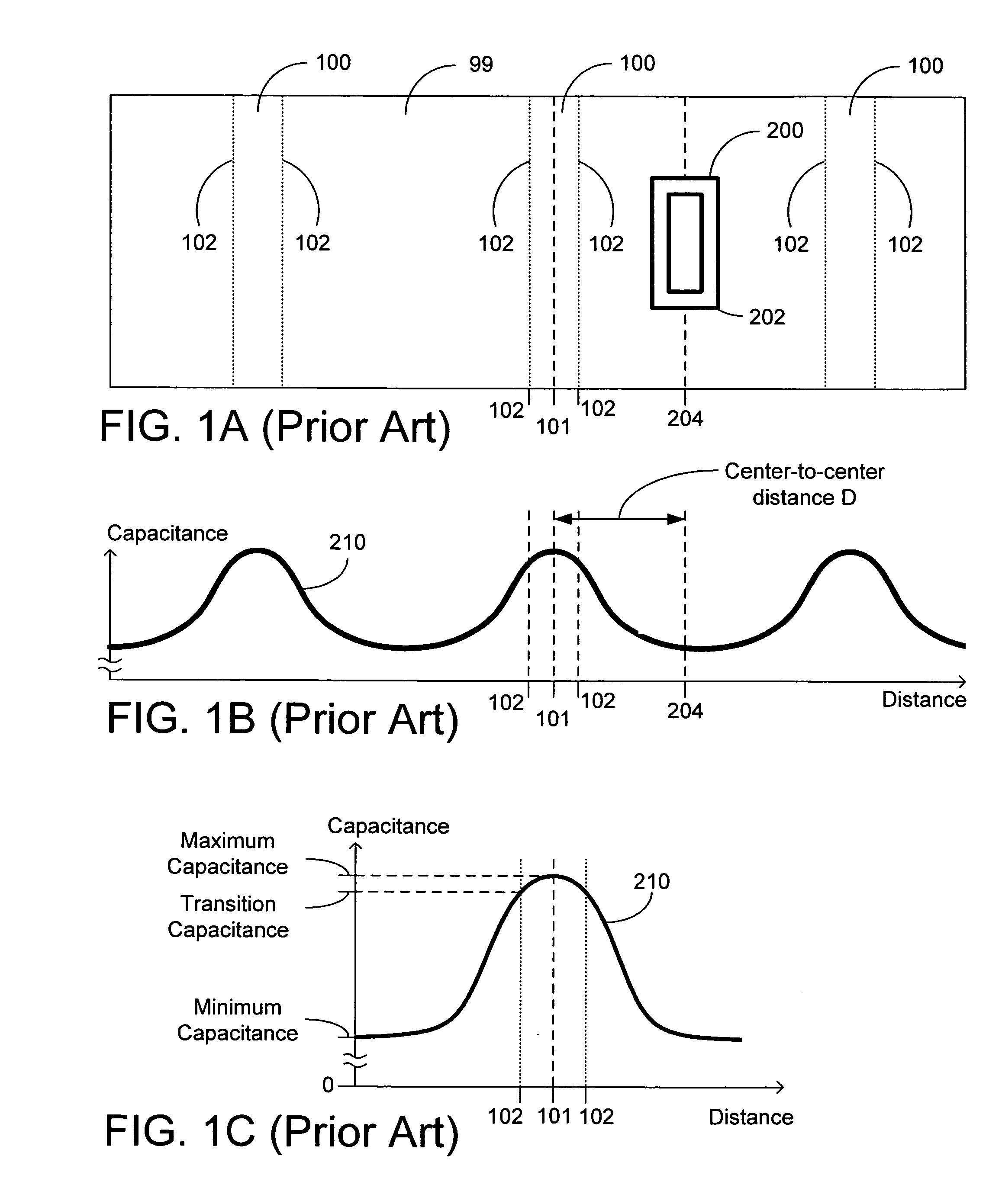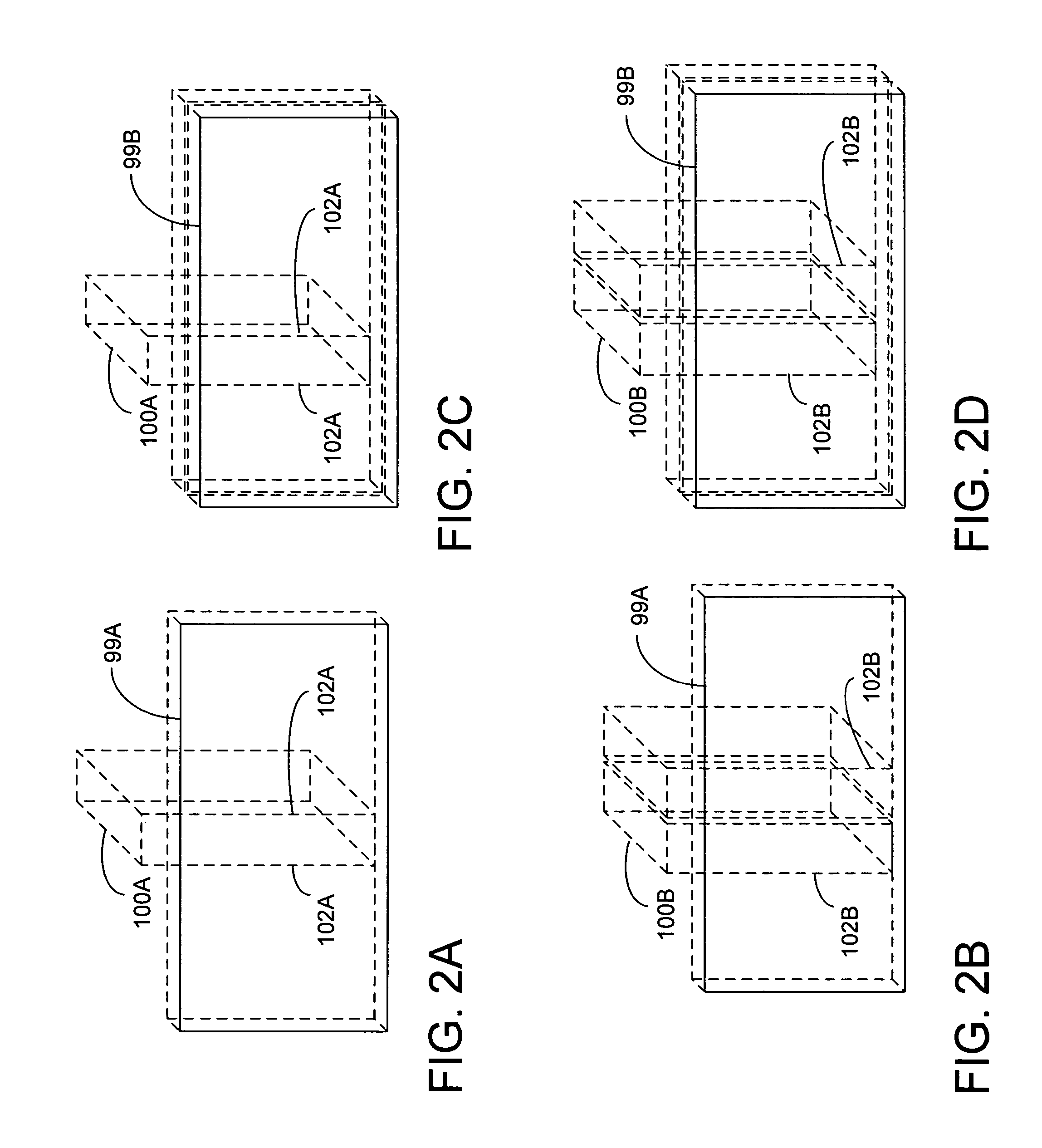Ratiometric stud sensing
a technology of studs and sensing devices, applied in the field of electronic sensors, can solve the problems of reducing the ability to accurately determine the centerline of studs, affecting the accuracy of studs, so as to reduce the effect of an unknown thickness of the member and the effect of effective capacitan
- Summary
- Abstract
- Description
- Claims
- Application Information
AI Technical Summary
Benefits of technology
Problems solved by technology
Method used
Image
Examples
Embodiment Construction
[0038]A ratiometric capacitive sensor may use capacitance measurements from multiple conductive plates to determine the presence of objects, such as studs and joists, hidden behind a covering surface such as a wall, floor, ceiling, etc. In some embodiments, a ratiometric capacitive sensor includes two conductive plates. Each conductive plate acts as part of a separate capacitor. Circuitry coupled to each plate measures an effective change in capacity of the separate capacitors, which is effected by the density of material in close proximity to the plates. As a result, the combination of a wall or other surface covering and an underlying stud or other member has a larger capacitance than a wall covering alone without a stud. A capacitance measurement may be taken from each plate. The capacitance measurement from one plate may then be compared to a capacitance measurement of another plate to determine boundaries and features of the materials in the vicinity of the plates.
[0039]FIG. 1A...
PUM
 Login to View More
Login to View More Abstract
Description
Claims
Application Information
 Login to View More
Login to View More - R&D
- Intellectual Property
- Life Sciences
- Materials
- Tech Scout
- Unparalleled Data Quality
- Higher Quality Content
- 60% Fewer Hallucinations
Browse by: Latest US Patents, China's latest patents, Technical Efficacy Thesaurus, Application Domain, Technology Topic, Popular Technical Reports.
© 2025 PatSnap. All rights reserved.Legal|Privacy policy|Modern Slavery Act Transparency Statement|Sitemap|About US| Contact US: help@patsnap.com



